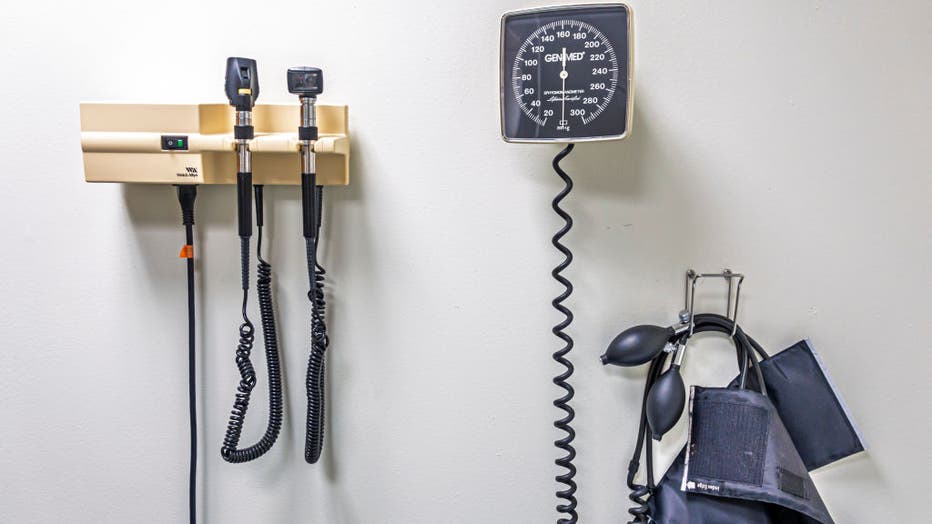Number of Americans struggling to pay medical bills reaches new high

Healthcare lawyer on anger toward insurance industry
Healthcare lawyer Harry Nelson joins LiveNOW from FOX's Josh Breslow to discuss the latest developments in the murder investigation of United Healthcare's CEO, as well as the underlying concerns regarding the US healthcare system.
LOS ANGELES - A record number of Americans say they cannot afford to pay for necessary healthcare or medication, with Gallup classifying 11% of U.S. adults as "cost desperate." That amounts to nearly 29 million people who both lack access to affordable care and have recently skipped care due to costs.
The new findings, released Wednesday by Gallup and West Health, paint a stark picture of rising medical hardship and widening economic and racial gaps in the U.S. healthcare system. The share of adults classified as cost secure—those able to access and afford quality healthcare—has dropped to just 51%, its lowest level since Gallup began tracking in 2021.
How many Americans can’t afford healthcare or medicine?
By the numbers:
According to Gallup, 11% of adults are now "cost desperate," meaning they have recently gone without care or medicine and lack access to affordable, quality healthcare. That’s a three-point rise since 2021 and the highest level on record.
Rates are far higher for marginalized groups. Hispanic adults (18%) and Black adults (14%) saw the steepest increases since 2021. Among households earning under $24,000 annually, the number skyrocketed to 25%—a jump of 11 percentage points in just three years. Adults in the $24,000–$48,000 bracket also saw a six-point rise, reaching 19% in 2024.
By contrast, adults earning over $180,000 saw a slight decrease in cost desperation, underscoring a growing disparity.
What is cost security and why is it eroding?
Big picture view:
The percentage of Americans considered cost secure has eroded from 56% in 2021 to just 51% in 2024. While white adults remain steady at 58%, the share of cost secure Black and Hispanic adults has dropped sharply—by 13 points to 41% and by 17 points to 34%, respectively.
Among the lowest-income Americans, the data is even more dire. Only 23% of households earning less than $24,000 are now cost secure, down 14 points since 2021.
Gallup researchers say these shifts reflect growing inequality in access to affordable healthcare. With consumer inflation, medical costs, and insurance gaps climbing, Americans with fewer resources are being hit hardest.
Access to affordable care also hits a new low
Dig deeper:
Beyond affordability, more than one-third of Americans (35%) now say they cannot access quality, affordable healthcare at all—a record high. That figure jumps to 64% among those earning under $24,000 and 57% among those earning between $24,000 and $48,000. These gaps in care access are also growing faster than in higher-income groups, where no change has been observed since 2023.

FILE - A standard blood pressure monitor and diagnostic tools hang on the wall of a medical exam room—basic equipment in clinics across the country where millions seek routine and urgent care. (Photo by: Jeffrey Greenberg/Universal Images Group via Getty Images)
This access problem also plays into the rise in cost insecurity—a broader category Gallup uses for people who struggle either with affordability or access, but not necessarily both. Nearly 40% of Americans fall into this category, with significantly higher rates among Black (45%) and Hispanic (48%) adults and those earning under $48,000.
What's next:
Healthcare unaffordability has real-world consequences beyond delayed treatment. According to Gallup, 12% of adults reported borrowing money to pay for healthcare in 2024, totaling an estimated $74 billion. Nearly 60% of Americans fear going into debt due to a major medical event, and many report cutting basic spending on food, utilities, and transportation to cover medical costs.
Researchers also warn of longer-term issues like job "lock"—when individuals stay in jobs they dislike solely for the health insurance. As the share of cost desperate Americans climbs, so too does the urgency for structural reform.
The Source: This report is based on findings from the West Health-Gallup Healthcare Indices Study, conducted Nov. 18–Dec. 27, 2024, with a nationally representative sample of 6,296 adults aged 18 and older. Gallup provided detailed breakdowns by race, income, and age. Additional context was drawn from Gallup’s Health Affordability Index trends, which track cost secure, cost insecure, and cost desperate populations.

